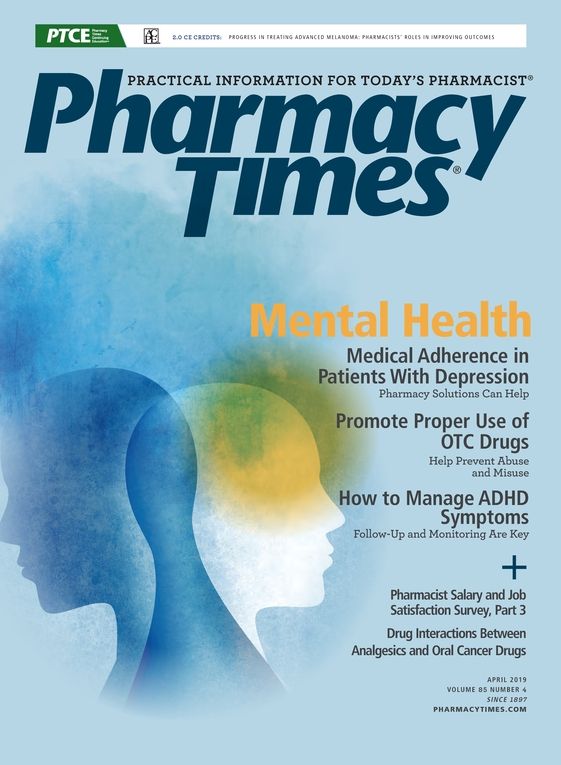Publication
Article
Pharmacy Times
America Has a Problem With Stimulants
Author(s):
Pharmacists should continue to be on the lookout for diversion and abuse to help stem the tide.
I have found over the years that pharmacists like knowing about drug trends. This knowledge can aid them in their jobs, making them aware that illegal stimulants are being abused big time, and they need to watch for the physical signs and potential abuse of prescription stimulants.
The abuse and diversion of prescription stimulants does not appear to have changed much, and pharmacists should continue be on the lookout, such as the abuse and diversion of benzodiazepines.
The opioid problem very much still exists, and the majority comprises illicit, clandestine-made fentanyl from China. Fentanyl finds its way into the United States through shipped packages or via Mexico, after which it comes across our southern border. Heroin is also still popular, and many times the drug of choice is a combination of illicit fentanyl and heroin. Prescription opioid abuse, however, greatly decreased once OxyContin was reformulated in 2010.1
Although most of the attention has been on illicit and prescription opioids, for several years we have seen the incredible acceleration of crystal methamphetamine production and shipment. This drug is courtesy of some of the same cartels that have brought death and destruction with heroin and illicit fentanyl.
Several years ago, our nation was in the midst of a methamphetamine crisis, with the drug often manufactured in mom-and-pop labs that used farm fertilizer and pseudoephedrine, along with other dangerous chemicals, to cook up the drug. The labs were dangerous and volatile, especially in the hands of inexperienced chemists who were often high on the product they were attempting to produce. This was a recipe for disaster, and there were many devastating explosions and fires in these labs.
These labs posed a danger to firefighters, members of law enforcement, and those who lived nearby. Some law enforcement personnel in the early days of these labs were exposed to harmful chemicals that impaired them for life. Fortunately, better protective equipment and training were developed that made this work less dangerous—but it was never entirely safe.
Subsequent methods changed, and most of the production was consummated in a 2-liter soda bottle, which was certainly not safe, but it did not create that same serious situation as full-blown labs. However, the bottles were mobile, which created concerns when suspects were stopped in their vehicles.
During this same time, a nationwide crackdown was being conducted on pseudoephedrine, requiring all pharmacists to obtain photo identification from purchasers. Coupled with a new nationwide tracking system of pseudoephedrine purchasers, access to this product, which is essential to produce methamphetamine was drastically reduced.
This led Mexico to ramp up its production of what is called crystal meth or “ice.” This is a very potent, and cheap, form of methamphetamine, which exposed a whole new group to this incredibly addictive drug. In my experience, methamphetamine is the most addictive drug on the planet, and crystal methamphetamine is certainly no exception.
In addition to crystal meth pouring across our southern border, the cartels increased their shipments of cocaine to the United States. Cocaine production and abuse subsided many years before, after the heyday of both powder and crack cocaine, so the renewed influx provided a double hit of stimulant drugs coming across the border.
I saw the stimulant problem just starting when I retired from Warren County in 2015. We were intercepting packages of crystal methamphetamine in large amounts, pounds at a time, that primarily came through the US Postal Service. Later, thanks to smuggling across the southern border, shipments increased significantly. Soon, our local drug task forces were working on nothing but crystal methamphetamine and cocaine cases, which remains the situation today. One thing that has come back on a limited basis is mixing cocaine and heroin for injection. In the old days, this was called a speedball, and it did not seem to make much sense, unless users were interested in causing their own demise.
One positive has been the reduction in opioid over- doses and overdose deaths.2
As long as the United States continues to have an insatiable appetite for drugs of all kinds, they will continue to pour into our nation, despite the incredible efforts of law enforcement at our borders.
Cmdr. John Burke is a 40-year veteran of law enforcement, the past president of the National Association of Drug Diversion Investigators, and the president and cofounder of the International Health Facility Diversion Association.
REFERENCES
- Coplan PM, Chilcoat HD, Butler SF, et al. The effect of an abuse-deterrent opioid formulation (OxyContin) on opioid-abuse related outcomes in the postmarketing setting. Clin Pharmacol Ther. 2016;100(3):275—286. doi: 10.1002/cpt.390.
- Joseph A. Overdose deaths have fallen for six months. Is it temporary or a sign of a corner turned? STAT. October 23, 2018. statnews.com/2018/10/23/overdose-deaths-fall-for-six-months/. Accessed March 18, 2019.







